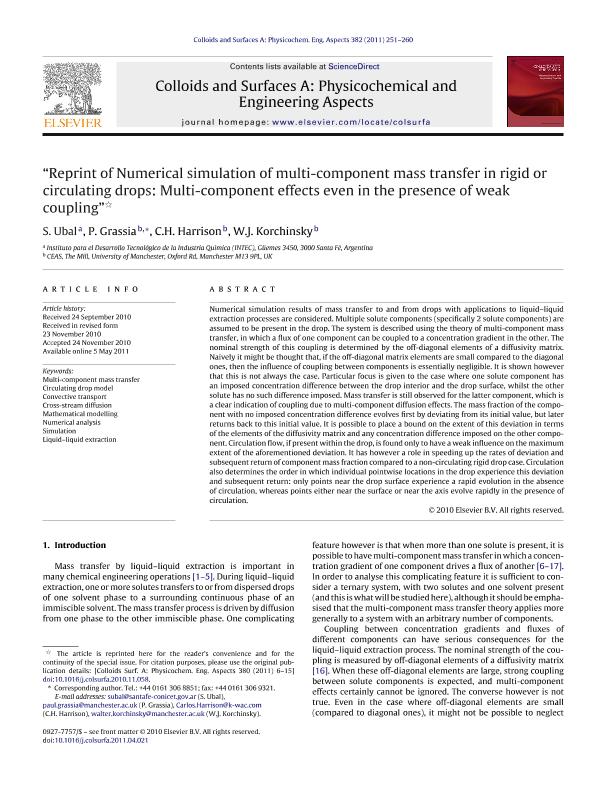Artículo
Reprint of Numerical simulation of multi-component mass transfer in rigid or circulating drops: Multi-component effects even in the presence of weak coupling
Fecha de publicación:
05/2011
Editorial:
Elsevier Science
Revista:
Colloids And Surfaces A: Physicochemical And Engineering Aspects
ISSN:
0927-7757
Idioma:
Inglés
Tipo de recurso:
Artículo publicado
Clasificación temática:
Resumen
Numerical simulation results of mass transfer to and from drops with applications to liquid–liquid extraction processes are considered. Multiple solute components (specifically 2 solute components) are assumed to be present in the drop. The system is described using the theory of multi-component mass transfer, in which a flux of one component can be coupled to a concentration gradient in the other. The nominal strength of this coupling is determined by the off-diagonal elements of a diffusivity matrix. Naively it might be thought that, if the off-diagonal matrix elements are small compared to the diagonal ones, then the influence of coupling between components is essentially negligible. It is shown however that this is not always the case. Particular focus is given to the case where one solute component has an imposed concentration difference between the drop interior and the drop surface, whilst the other solute has no such difference imposed. Mass transfer is still observed for the latter component, which is a clear indication of coupling due to multi-component diffusion effects. The mass fraction of the component with no imposed concentration difference evolves first by deviating from its initial value, but later returns back to this initial value. It is possible to place a bound on the extent of this deviation in terms of the elements of the diffusivity matrix and any concentration difference imposed on the other component. Circulation flow, if present within the drop, is found only to have a weak influence on the maximum extent of the aforementioned deviation. It has however a role in speeding up the rates of deviation and subsequent return of component mass fraction compared to a non-circulating rigid drop case. Circulation also determines the order in which individual pointwise locations in the drop experience this deviation and subsequent return: only points near the drop surface experience a rapid evolution in the absence of circulation, whereas points either near the surface or near the axis evolve rapidly in the presence of circulation.
Archivos asociados
Licencia
Identificadores
Colecciones
Articulos(INTEC)
Articulos de INST.DE DES.TECNOL.PARA LA IND.QUIMICA (I)
Articulos de INST.DE DES.TECNOL.PARA LA IND.QUIMICA (I)
Citación
Ubal, Sebastian; Grassia, Paul Sebastian; Harrison, Carlos; Korchinsky, Walter; Reprint of Numerical simulation of multi-component mass transfer in rigid or circulating drops: Multi-component effects even in the presence of weak coupling; Elsevier Science; Colloids And Surfaces A: Physicochemical And Engineering Aspects; 382; 1-3; 5-2011; 251–260
Compartir
Altmétricas




